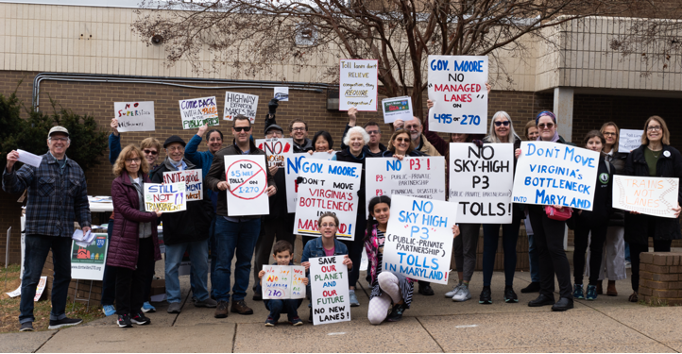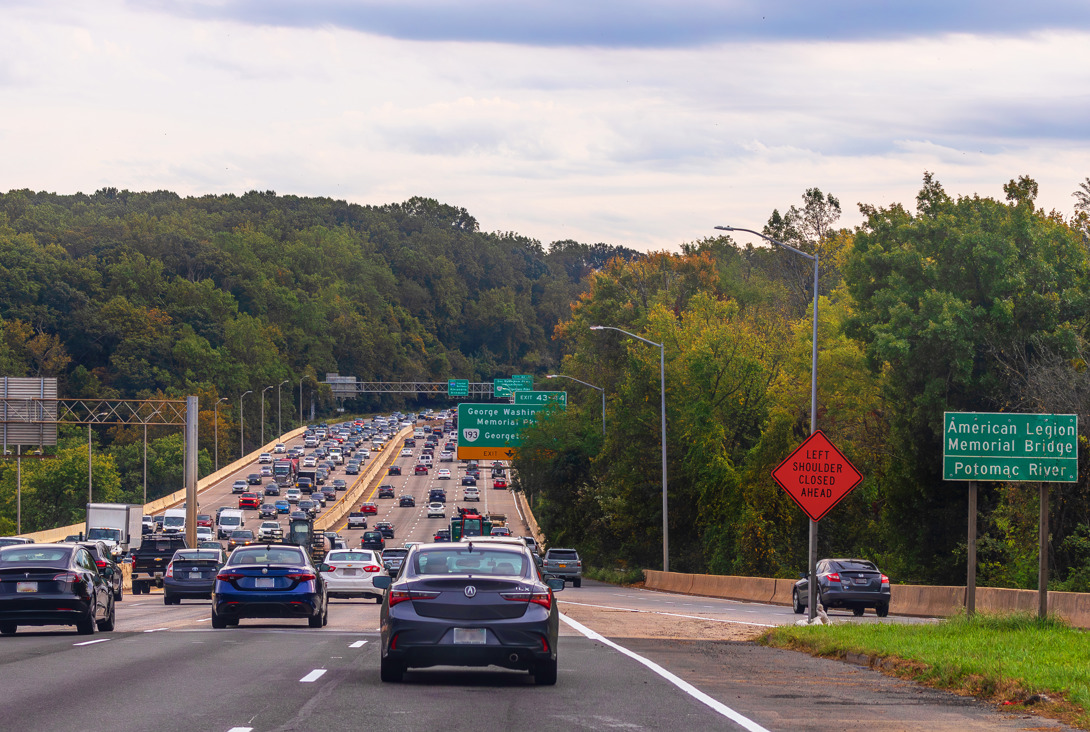In 2023, Gov. Moore made the unforced error of picking up Larry Hogan’s bogged-down toll lane plan and calling it his own. Unless and until Moore changes his mind, he’ll be pushing and pulling this behemoth along, even though it can’t bear public scrutiny, even though it will do a world of harm.
At this point – 6 years in – the project is a mass of moving parts, unknowns, and challenges. See (below) the status of key examples of each and what to look for next.
Where Will Project Funding Come From? MDOT is waiting to hear if its grant application for federal funding is approved, and for how much. MDOT pledged to put in $806.5M of the state’s own money (see “Doomsday Transportation Budget”, below). Grant awards will be announced early in 2024. If the state fails to get the grant, it can reapply for next year, or possibly pursue a public-private partnership (very bad move), or wisely end the project in favor of better alternatives.
Lawsuit Challenging the Project: The significant lawsuit brought by the Sierra Club, Friends of Moses Hall, National Trust for Historic Preservation, and NRDC is now fully briefed and awaiting a decision from a judge in US District Court. See the Sierra Club and fellow plaintiffs’ powerful reply to MDOT and FHWA, which begins: “Environmental impact statements are not marketing materials.” It’s not known when the judge will issue a decision.
Outside MDOT’s 12/2/23 open house. Credit: Sierra Club Maryland Chapter
“Doomsday Transportation Budget”: That’s Maryland Matters’ name for Gov. Moore’s “$3.3 billion gap in the budget for road and transit projects.” MDOT says it will cut commuter bus and MARC rail service, the same public transit features MDOT touts as highlights of the toll lane package. MDOT has not announced cuts to toll lane planning. The Maryland General Assembly will debate and pass a budget in early 2024.
Virginia’s Eye on Maryland: Maryland and Virginia have a hazy sort of toll lane “cooperative” partnership going on. Their failure to publicly disclose the details is the subject of a lawsuit by the Maryland Transit Opportunities Coalition. Now VDOT’s Southside project looks to extend private toll lanes from VA across the Woodrow Wilson Bridge and into Maryland as far as Oxon Hill. The Prince George’s County Council certainly doesn’t want it. Toll lanes anywhere on the Beltway will create new bottlenecks and lead to more toll lanes. See Northern VA’s sorry example. VDOT plans hearings in early 2024.
Is the American Legion Bridge Really in Bad Shape? In the press, MDOT officials say, “There are structural issues…Before the end of the decade, we will need to replace” the bridge. But they say something else in the state’s federal grant proposal: “While the bridge is safe, it will require repairs to rehabilitate its deck [surface] within the next decade.” Two stories, big differences in cost, time, disruption, and environmental impact. Watch in coming months for more detailed analyses of the bridge’s condition.
When, if Ever, Might Construction Start? Given the profound budget and funding issues, broad opposition, and pending lawsuit, the Moore toll lanes may never be built. That said, here’s the proposed Phase 1 schedule in MDOT’s federal grant application (MDOT says lower I-270 would be a later phase). Begin final design and construction from the GW Pkwy to south of Cabin John Pkwy in July 2025. Begin final design and construction from south of Cabin John Pkwy to project terminus north of Westlake Terrace on the I-270 West Spur in April 2026. Open Phase 1 to traffic by summer 2031.
Grassroots Opposition Keeps Growing: The more the public learns about the negative impact of these toll lanes on commute times, racial and economic equity, taxpayers’ pockets, and the environment, the more the public rejects the plan. MDOT’s final toll lane open house on December 2 was filled with opponents. Our statewide coalition of grassroots groups, advocacy organizations, and elected allies will not let up.
Ongoing Action Item
Tell MDOT what you think of their toll lane plans. Click here to go to MDOT’s project homepage. Scroll to the bottom and write! As always, thank you!



